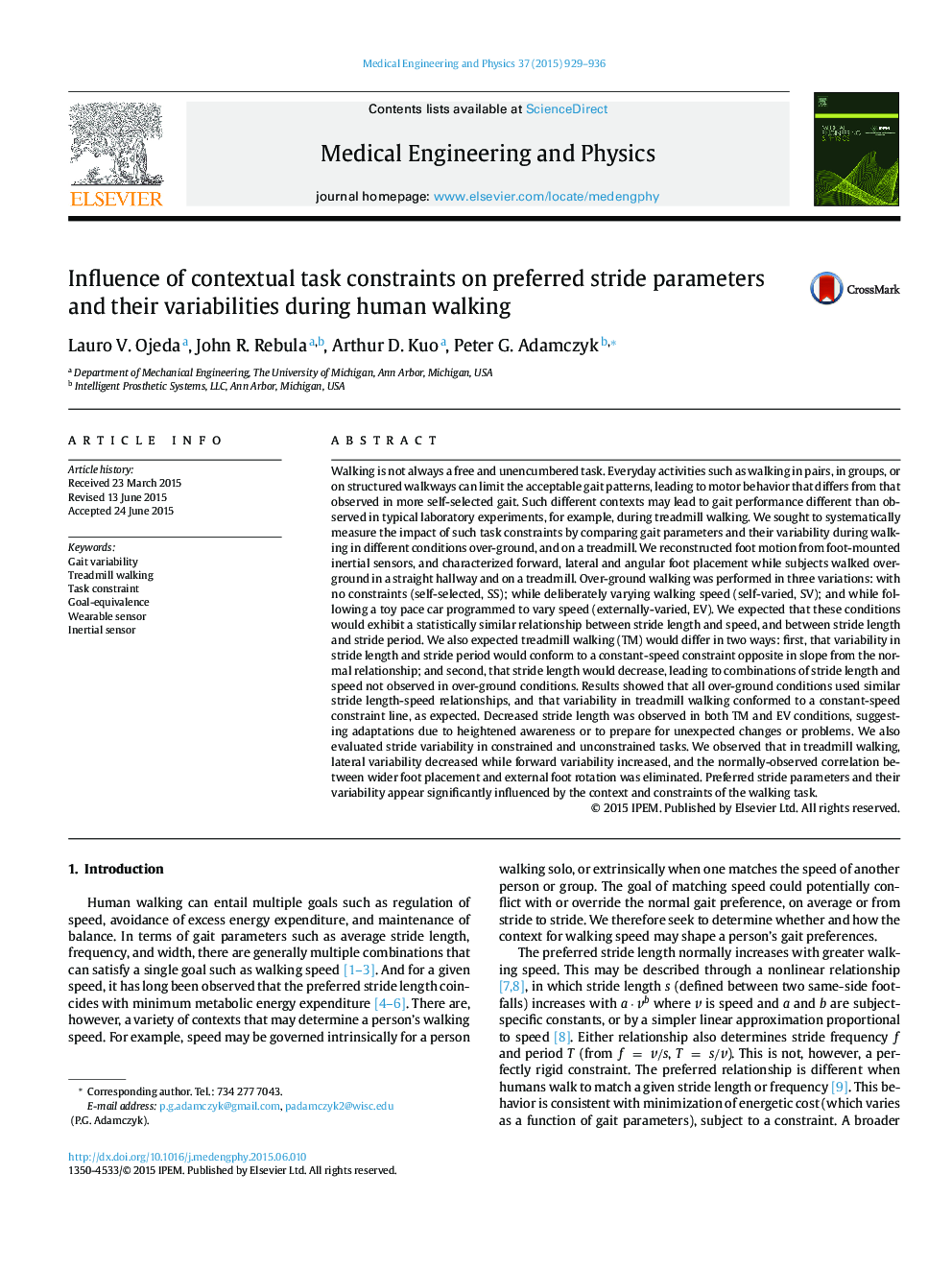| Article ID | Journal | Published Year | Pages | File Type |
|---|---|---|---|---|
| 875711 | Medical Engineering & Physics | 2015 | 8 Pages |
•Context and constraints in walking tasks influence gait parameters and variability.•Subjects walked with different speed constraints, internally and externally imposed.•Stride lengths were reduced in two externally controlled speed conditions.•Covariation between lateral and angular foot placement was eliminated on a treadmill.•Stride length versus speed variability showed speed-maintaining structure on a treadmill.
Walking is not always a free and unencumbered task. Everyday activities such as walking in pairs, in groups, or on structured walkways can limit the acceptable gait patterns, leading to motor behavior that differs from that observed in more self-selected gait. Such different contexts may lead to gait performance different than observed in typical laboratory experiments, for example, during treadmill walking. We sought to systematically measure the impact of such task constraints by comparing gait parameters and their variability during walking in different conditions over-ground, and on a treadmill. We reconstructed foot motion from foot-mounted inertial sensors, and characterized forward, lateral and angular foot placement while subjects walked over-ground in a straight hallway and on a treadmill. Over-ground walking was performed in three variations: with no constraints (self-selected, SS); while deliberately varying walking speed (self-varied, SV); and while following a toy pace car programmed to vary speed (externally-varied, EV). We expected that these conditions would exhibit a statistically similar relationship between stride length and speed, and between stride length and stride period. We also expected treadmill walking (TM) would differ in two ways: first, that variability in stride length and stride period would conform to a constant-speed constraint opposite in slope from the normal relationship; and second, that stride length would decrease, leading to combinations of stride length and speed not observed in over-ground conditions. Results showed that all over-ground conditions used similar stride length-speed relationships, and that variability in treadmill walking conformed to a constant-speed constraint line, as expected. Decreased stride length was observed in both TM and EV conditions, suggesting adaptations due to heightened awareness or to prepare for unexpected changes or problems. We also evaluated stride variability in constrained and unconstrained tasks. We observed that in treadmill walking, lateral variability decreased while forward variability increased, and the normally-observed correlation between wider foot placement and external foot rotation was eliminated. Preferred stride parameters and their variability appear significantly influenced by the context and constraints of the walking task.
